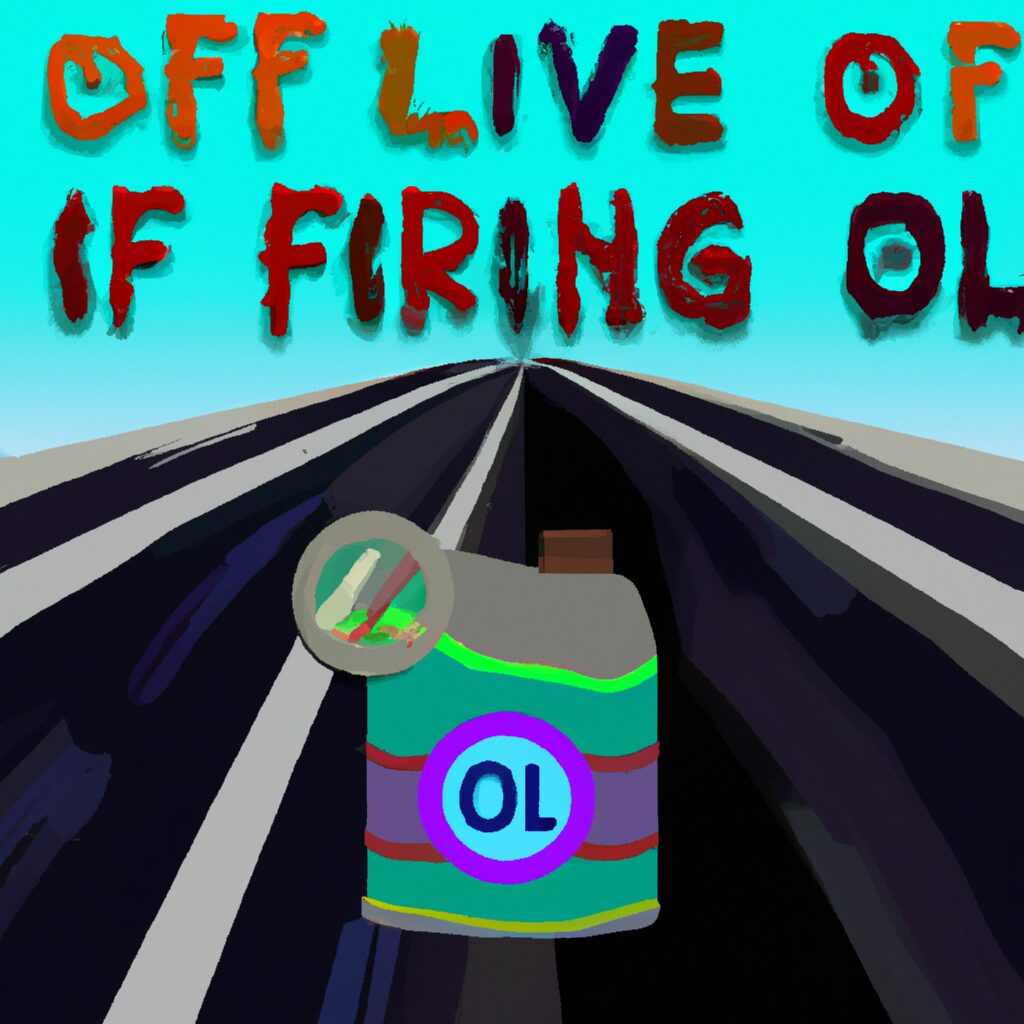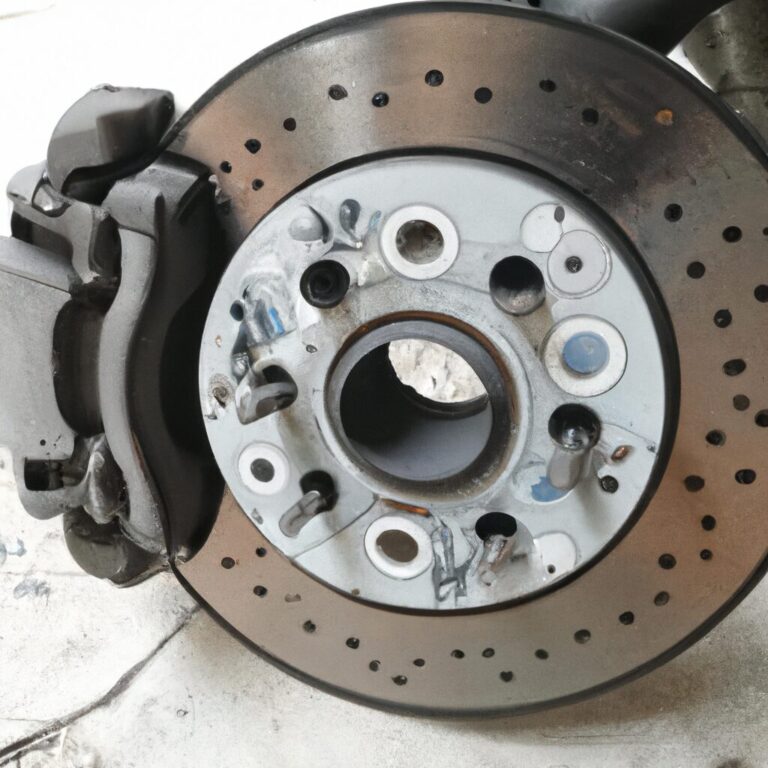how long can i drive on 0 oil life
Introduction
Driving on a vehicle with 0 oil life can be a risky endeavor. It is important to understand the risks associated with driving a vehicle with 0 oil life and the potential consequences of doing so. This article will discuss how long you can drive on 0 oil life, the risks associated with it, and the potential consequences of driving on 0 oil life.
What Happens When You Drive With 0% Oil Life?
Driving with 0% oil life can be extremely dangerous and can cause serious damage to your vehicle. When the oil life reaches 0%, it means that the oil has reached the end of its useful life and needs to be changed. If you continue to drive with 0% oil life, the oil will become contaminated and will no longer be able to lubricate the engine components. This can cause the engine to overheat, leading to serious damage to the engine and other components.
In addition, driving with 0% oil life can cause the oil filter to become clogged, which can lead to a decrease in engine performance and fuel efficiency. It can also cause the engine to produce more emissions, which can be harmful to the environment.
For these reasons, it is important to check your oil life regularly and change the oil when it reaches 0%. Doing so will help to ensure that your vehicle is running safely and efficiently.
How Long Can You Drive on 0% Oil Life Before Damage Occurs?
Driving on 0% oil life can cause significant damage to your engine. It is important to check your oil regularly and replace it when necessary. If you drive on 0% oil life, it is likely that you will experience engine damage within a few hundred miles. The exact amount of time you can drive on 0% oil life before damage occurs will depend on the condition of your engine and the type of oil you are using. It is best to avoid driving on 0% oil life altogether and replace your oil as soon as possible.
What Are the Risks of Driving With 0% Oil Life?
Driving with 0% oil life is a serious risk to the health of your vehicle. When the oil life reaches 0%, it means that the oil has reached the end of its useful life and needs to be changed. Driving with 0% oil life can cause serious damage to the engine, leading to costly repairs or even complete engine failure.
The oil in a vehicle is responsible for lubricating the engine components and keeping them cool. When the oil life reaches 0%, it means that the oil has become too dirty and has lost its ability to lubricate and cool the engine. This can cause the engine components to overheat and wear out prematurely, leading to costly repairs or even complete engine failure.
In addition, driving with 0% oil life can cause the oil filter to become clogged, which can lead to a decrease in engine performance and fuel efficiency. This can also cause the engine to run hotter than normal, leading to further damage.
Finally, driving with 0% oil life can also cause the oil to become contaminated with dirt and debris, which can lead to further damage to the engine.
For these reasons, it is important to check your oil life regularly and change the oil when it reaches 0%. Doing so will help to ensure that your vehicle runs smoothly and efficiently, and will help to avoid costly repairs or engine failure.
How to Tell When Your Oil Life Is at 0%
When your oil life is at 0%, it is time to change your oil. This is an important maintenance task that should not be overlooked. It is important to check your oil life regularly to ensure that your vehicle is running properly and efficiently.
To check your oil life, you will need to consult your vehicle’s owner’s manual. This will provide you with the information you need to determine when your oil life is at 0%. Generally, the oil life indicator will be located on the dashboard of your vehicle. It will usually be a percentage that will decrease as the oil gets older and dirtier.
When the oil life indicator reaches 0%, it is time to change your oil. This is an important step in maintaining your vehicle and ensuring that it runs properly. You should also check your oil level regularly to make sure that it is at the correct level.
If you are unsure of how to change your oil, you should consult a professional mechanic. They will be able to provide you with the necessary information and tools to get the job done correctly.
It is important to remember that when your oil life is at 0%, it is time to change your oil. This is an important maintenance task that should not be overlooked. By regularly checking your oil life and changing your oil when necessary, you can ensure that your vehicle is running properly and efficiently.
What Are the Signs of Low Oil Life?
Low oil life is an indication that the oil in your vehicle needs to be changed. It is important to pay attention to this warning, as oil is essential for the proper functioning of your vehicle. There are several signs that can indicate low oil life, including:
1. Check Engine Light: The check engine light is one of the most common indicators of low oil life. If the light is illuminated, it is important to check the oil level and quality.
2. Oil Pressure Warning Light: Another common indicator of low oil life is the oil pressure warning light. This light will illuminate when the oil pressure is too low, which can be caused by low oil levels or poor oil quality.
3. Excessive Exhaust Smoke: If your vehicle is producing excessive exhaust smoke, it could be a sign of low oil life. This is because the oil helps to lubricate the engine and reduce friction, which can cause smoke if the oil is not at the proper level.
4. Unusual Noises: If you notice any unusual noises coming from your engine, it could be a sign of low oil life. Low oil levels can cause the engine to run hotter, which can lead to increased friction and noise.
By paying attention to these signs, you can ensure that your vehicle is running properly and that the oil is at the proper level. If you notice any of these signs, it is important to check the oil level and quality and change the oil if necessary.
How to Extend the Life of Your Oil
Proper maintenance of your oil is essential to extending its life. Here are some tips to help you get the most out of your oil:
1. Change your oil regularly. Depending on the type of oil you use, you should change it every 3,000 to 5,000 miles. This will help keep your engine running smoothly and prevent buildup of dirt and debris.
2. Use the right oil for your engine. Different engines require different types of oil. Make sure you use the oil that is recommended for your engine.
3. Keep your engine clean. Regularly clean the engine and oil filter to remove dirt and debris. This will help keep your oil clean and free of contaminants.
4. Monitor your oil levels. Check your oil levels regularly to make sure they are at the correct level. Low oil levels can cause damage to your engine.
5. Use a quality oil filter. A quality oil filter will help keep your oil clean and free of contaminants.
By following these tips, you can help extend the life of your oil and keep your engine running smoothly.
What Are the Benefits of Regular Oil Changes?
Regular oil changes are essential for the proper functioning of any vehicle. Oil is the lifeblood of an engine, and it needs to be changed regularly to ensure that the engine runs smoothly and efficiently. Here are some of the benefits of regular oil changes:
1. Improved Performance: Regular oil changes help to keep the engine running at its peak performance. Fresh oil helps to reduce friction and wear on the engine components, allowing the engine to run more efficiently.
2. Reduced Emissions: Dirty oil can cause the engine to run less efficiently, resulting in higher emissions. Regular oil changes help to reduce emissions by keeping the engine running cleanly and efficiently.
3. Extended Engine Life: Regular oil changes help to extend the life of the engine by reducing wear and tear on the engine components. This helps to keep the engine running longer and more reliably.
4. Cost Savings: Regular oil changes can help to save money in the long run by reducing the need for costly repairs and maintenance.
Overall, regular oil changes are essential for the proper functioning of any vehicle. They help to improve performance, reduce emissions, extend engine life, and save money in the long run.
How to Properly Dispose of Used Motor Oil
Properly disposing of used motor oil is an important part of maintaining a healthy environment. Used motor oil contains hazardous materials that can be harmful to the environment if not disposed of properly. To ensure that used motor oil is disposed of safely, it is important to follow the steps outlined below.
First, it is important to collect the used motor oil in a sealed container. This container should be clearly labeled as containing used motor oil and should be made of a material that is resistant to oil. Once the container is full, it should be taken to a recycling center or hazardous waste facility.
Second, it is important to make sure that the used motor oil is not mixed with other materials. This includes gasoline, antifreeze, and other automotive fluids. Mixing these materials can create hazardous waste that is difficult to dispose of safely.
Third, it is important to make sure that the used motor oil is not poured down the drain or on the ground. This can contaminate the water supply and soil, and can be harmful to plants and animals.
Finally, it is important to make sure that the used motor oil is disposed of in accordance with local regulations. Different states and municipalities have different regulations regarding the disposal of used motor oil, so it is important to check with local authorities to ensure that the oil is disposed of properly.
By following these steps, it is possible to properly dispose of used motor oil and help protect the environment.
Q&A
1. How long can I drive on 0 oil life?
It is not recommended to drive on 0 oil life. Driving on 0 oil life can cause serious damage to your engine and should be avoided. It is best to change your oil as soon as possible when the oil life reaches 0.
Conclusion
Driving on 0 oil life is not recommended and can cause serious damage to your engine. It is best to check your oil level regularly and change your oil when it reaches 0%. If you do drive on 0 oil life, it is important to keep an eye on your engine temperature and pull over if it starts to overheat. Ultimately, it is best to avoid driving on 0 oil life and take the necessary steps to ensure your engine is properly maintained.




